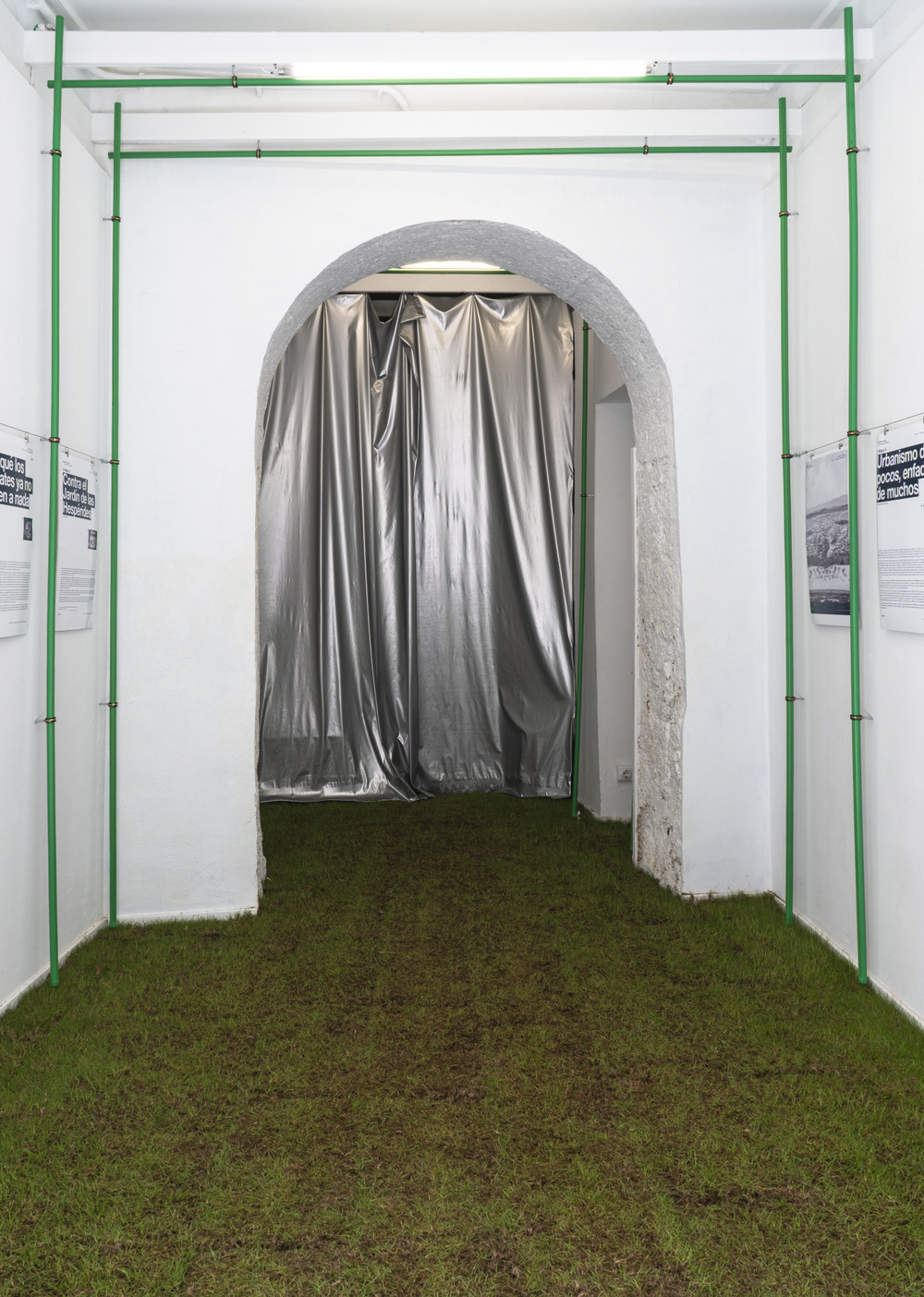
Territorio Común
Typology
Group Exhibition
Location
Galería ZULO (LPGC)
Participants in the exhibition
à la sauvette, Oficina de Innovación Cívica, Pablo Delgado Nuñez, OFMAKE, Marta Torrecilla Gonzalez. Jonay P. Matos (photography)
Organizer
Colegio de Arquitectos de Gran Canaria, Galería ZULO
The Fourth Landscape: A New Way of Inhabiting the Territory.
We are driven by the need to ensure a livable future in the face of the great challenges of climate change and biodiversity loss. We believe that the EGO-centric development model must give way to an ECO-centric approach. We must design not only for people but also for life, as human well-being cannot exist without the well-being of the ecosystems we inhabit.
The botanist and landscape architect Gilles Clément (France, 1943) defined the Third Landscape in 2004 as those residual spaces that reflect neither power nor submission. We now propose the concept of the Fourth Landscape, understood as spaces specifically planned for nature, where people can also develop their social and urban lives.
The botanist and landscape architect Gilles Clément (France, 1943) defined the Third Landscape in 2004 as those residual spaces that reflect neither power nor submission. We now propose the concept of the Fourth Landscape, understood as spaces specifically planned for nature, where people can also develop their social and urban lives.


The Fourth Landscape is both a mental and a material concept. It is mental because it involves a new way of seeing the territory we inhabit. It is material because it seeks to transform the physical conditions of urban spaces for their renaturalization, adapting them to all forms of life.
Our cities need more nature. This is not just an aesthetic action; it is an invitation to incorporate natural processes into urban spaces. We must explore regenerative solutions and design based on natural functioning, with the goal of improving climate adaptation and providing habitats for other species.
Our cities need more nature. This is not just an aesthetic action; it is an invitation to incorporate natural processes into urban spaces. We must explore regenerative solutions and design based on natural functioning, with the goal of improving climate adaptation and providing habitats for other species.



As we continue to build on our territory, we increase the pressure on its natural systems. Therefore, urbanism, landscaping, and architecture must be conceived and executed from a pluralistic and egalitarian approach toward the other species that inhabit the territory. Not only should people be considered agents in urban processes, but local fauna and flora must also be recognized as direct actors, as they are profoundly affected by our territorial expansion.
The urgent context we face leads us to assert that the defense of biodiversity, climate resilience, and the drastic reduction of carbon emissions in the construction industry are, or should be, fundamental pillars of architectural practice.
We are moving towards a future where restoring our territory must come first, even before we make any modifications. If we were ever sustainable, that notion is no longer enough.
The urgent context we face leads us to assert that the defense of biodiversity, climate resilience, and the drastic reduction of carbon emissions in the construction industry are, or should be, fundamental pillars of architectural practice.
We are moving towards a future where restoring our territory must come first, even before we make any modifications. If we were ever sustainable, that notion is no longer enough.
